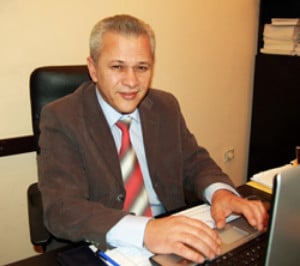Selected Papers from the 8th and 9th International Conference on Mining and Environmental Protection
A special issue of Minerals (ISSN 2075-163X). This special issue belongs to the section "Environmental Mineralogy and Biogeochemistry".
Deadline for manuscript submissions: closed (31 December 2023) | Viewed by 11846
Special Issue Editor
Interests: mining; mechanization; environment; secondary raw materials; treatment and recycling of industrial and mining wastes
Special Issues, Collections and Topics in MDPI journals
Special Issue Information
Dear Colleagues,
We are pleased to inform you that the 9th International Conference on Mining and Environmental Protection (MEP 2023). The 9th International Conference on Mining and Environmental Protection will be held from 24 to 27 May in Sokobanja, Serbia, organized by the University of Belgrade, Faculty of Mining and Geology in Belgrade—CENTER FOR ENVIRONMENTAL ENGINEERING.
Previous conferences were very successful; scientists and companies from many countries gathered to share experiences, information, and research results. The objective of this conference is to bring together engineers, scientists, and managers working in the mining industry, research organizations, and government organizations, on the development and application of best practices in the mining industry in respect of environment protection.
In the previous 8th International Conference of Mining and Environmental Protection (MEP 2021), at the height of the COVID-19 pandemic, approximately 80 participants from home and abroad participated, including participants from Germany, Spain, Slovenia, Croatia, Slovakia, Bulgaria, Russia, North Macedonia, and Bosnia and Herzegovina, whose works were printed in the Conference Proceedings. The Proceedings published a total of 38 articles.
At the conference in 2023, numerous scientists from Serbia and abroad are anticipated to participate once more. The attendance of representatives from almost all Serbian mines is expected, as well as significant participation of professionals from mines, institutes, and universities from all over the world.
Selected papers from both the 8th and 9th International Conference on Mining and Environmental Protection will be published in this Special Issue of Minerals.
Official Website of the conference: https://mep.rgf.bg.ac.rs/
Prof. Dr. Ivica Ristović
Guest Editor
Manuscript Submission Information
Manuscripts should be submitted online at www.mdpi.com by registering and logging in to this website. Once you are registered, click here to go to the submission form. Manuscripts can be submitted until the deadline. All submissions that pass pre-check are peer-reviewed. Accepted papers will be published continuously in the journal (as soon as accepted) and will be listed together on the special issue website. Research articles, review articles as well as short communications are invited. For planned papers, a title and short abstract (about 100 words) can be sent to the Editorial Office for announcement on this website.
Submitted manuscripts should not have been published previously, nor be under consideration for publication elsewhere (except conference proceedings papers). All manuscripts are thoroughly refereed through a single-blind peer-review process. A guide for authors and other relevant information for submission of manuscripts is available on the Instructions for Authors page. Minerals is an international peer-reviewed open access monthly journal published by MDPI.
Please visit the Instructions for Authors page before submitting a manuscript. The Article Processing Charge (APC) for publication in this open access journal is 2400 CHF (Swiss Francs). Submitted papers should be well formatted and use good English. Authors may use MDPI's English editing service prior to publication or during author revisions.
Keywords
- surface mining of mineral deposits
- underground mining of mineral deposits
- underground constructions
- the exploitation of oil and gas
- geothermal energy and deep drilling
- environmental protection in mining
- sustainable development in the mining industry
- ecological aspects of exploitation energy resources
- mine closure
- remote sensing
- movement and deformational analysis
- clean coal technologies
- clean energy
- secondary raw materials
- air pollution
- soil contamination, remediation, and reclamation
- mining water and wastewater management
- assessment of environmental impact
- life cycle assessment
- systems of environmental protection
- environmental modelling
- environmental geophysical prospections
- legislation in environmental protection
- public health and environment
- natural renewable resources
- mining geology
- biomass
- biomining





